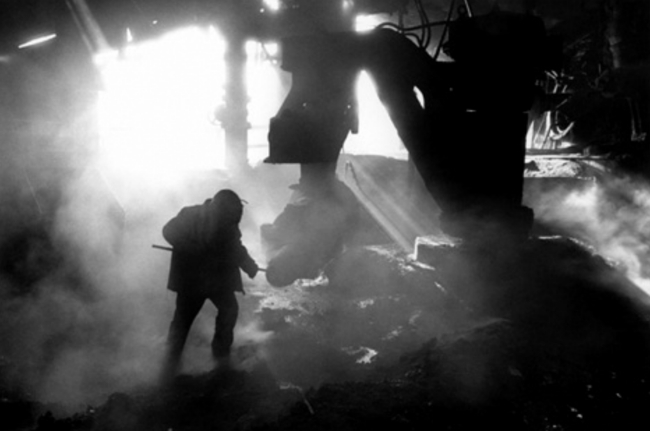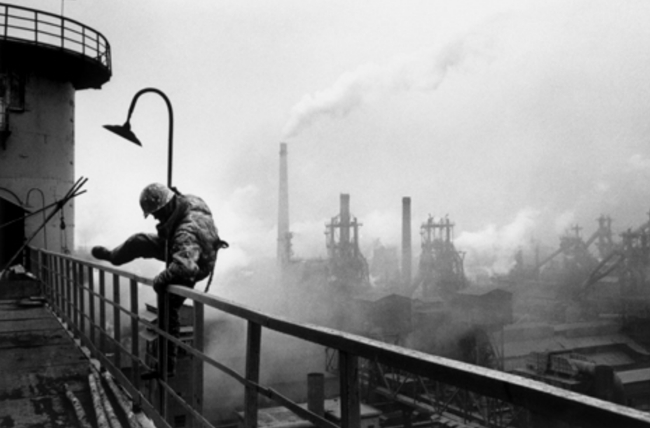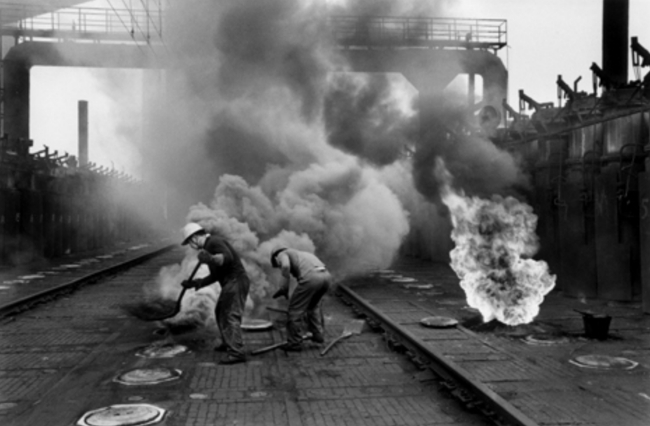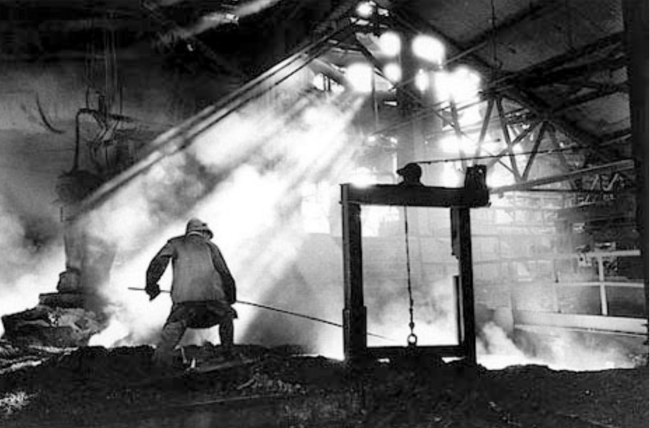I know almost nothing about Zhou Hai, this week’s Sunday Salon photographer. I know he was born in 1970 in the city of Guilin, which is located in the Guangxi region of China — a region known for its natural beauty. I know he attended Guangxi University and graduated in 1992 with a degree in Radio Engineering.
And that’s it; that’s all I know. In a way, that’s appropriate. I suspect Zhou Hai would prefer that people pay attention to his work, not to him. Many of the best photojournalists have elected to remain anonymous behind the lens. The photographs; the work — that’s what matters.

And such amazing photographs. When I came across Zhou Hai’s photos, I was immediately reminded of a few lines of a poem by William Blake:
And did the Countenance Divine
Shine forth upon our clouded hills?
And was Jerusalem builded here
Among these dark Satanic mills?
Zhou Hai is best known for his series Heaviness of Industry (also sometimes referred to as The Unbearable Heaviness of Industry), which explores those ‘dark Satanic mills.’ These photographs have been compiled into a book by the same name. In essence, the series is Zhou’s exploration into the Chinese industrial revolution.
For the last decade or so, China has been undergoing a radical social and cultural change, a change unique in world history. They are simultaneously moving into both the industrial era (similar to what the West experienced in the 1890s to the 1930s) and the digital era. Much media attention is given to China’s digital revolution; similarly, there is a lot of reporting about the growth of the nation’s physical infrastructure. However, nobody is looking at the people who create the materials required to build all that infrastructure.

Nobody until Zhou Hai arrived with his Leica. He visited coal mines, steel mills, concrete operations — the industries behind the industries — and documented what he saw. His photographs bear an eerie resemblance to the urban dystopias we see in science fiction movies. The scenes are bleak, alien, hostile. The men — and they all seem to be men — are mostly anonymous workers, usually engaged in inexplicable strenuous labor, dwarfed by immense manufacturing compounds.
It’s not an illusion that the people in the photographs seem to be feeding machinery. They are, in fact, many of them are doing tasks that were done by machines later in the Western industrial revolution. Manpower is so abundant in China that it’s cheaper and quicker to use humans to do the jobs of machines than to build the machines to do the job. Instead of anonymous machines replacing humans, anonymous humans have replaced machinery. Their unsparing labor has gone — and except for the work of Zhou Hai, will continue to go — unrecognized as China leapfrogs into digital culture.

It occurs to me that in a very real way, these photographs are about heroism. It’s obvious from looking at the conditions under which they labor that these men will be damaged by their work — their bodies, their lungs, their eyes, their bones, all terribly damaged. It’s also obvious that the men themselves must be perfectly aware they’ll be damaged. Yet they go to work, they put in their hours, they do their jobs — and they do it for the most common capitalist reason imaginable. They do it to earn a buck and put food on the table.

This isn’t the sort of sacrificial heroism that gets celebrated; there’s nothing flashy or romantic about it. But to get up every day and willfully go to a job that you know with mathematical certitude will break your body and sap your spirit, to toil every day in hopeless isolation because other people depend on you — that’s heroism.
